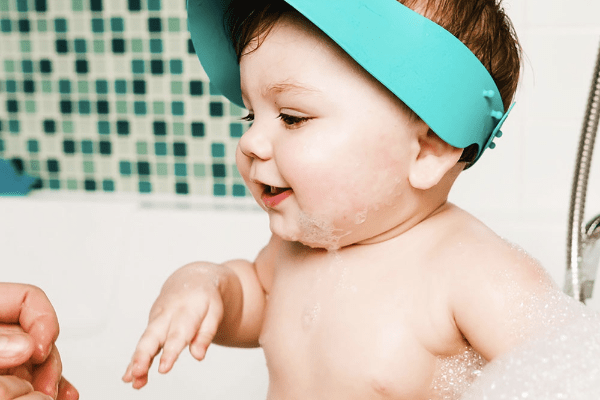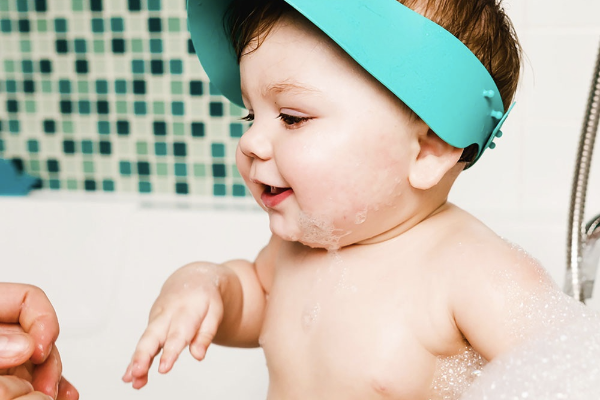Preparing for a new baby can be overwhelming, even when you’ve been around the block once before. There’s the gear you need to get, the plans to put in place, and the tiny but potentially troublesome task of telling your firstborn. Looking to head off any early sibling rivalry? Introduce your child to the concept of a sibling with some of these books all about bringing a new baby home. They make becoming a big brother or sister seem like your family’s next big adventure.
The Sister Book by Todd Parr
This simple and oh-so-sweet read details all different kinds of sisters, with kid-friendly illustrations to accompany each. “Some sisters like to be dressy. Some sisters like to be messy.” The book just released this spring and features plenty of cameos by baby sisters and even a spot to attach of photo of the young reader’s sister.
Available at amazon.com, $12.17.
Babies Don’t Eat Pizza: A Big Kids’ Book About Baby Brothers and Baby Sisters by Dianne Danzig, illustrated by Debbie Tilley
Big siblings get a legit education on what to expect when a little one enters the picture, with words like “uterus,” “umbilical cord” and “adopt” introduced in this detailed picture book. Danzig covers it all from snacktime to sleepytime, and the crying in between, all with a small dose of humor, while keeping the big sibling an important part of the plot.
Available at amazon.com, $8.15.
You Were the First by Patricia MacLachlan, illustrated by Stephanie Graegin
Parents will appreciate the literary walk down memory lane this book provides, from baby’s first smile to throwing a ball and everything in between. The narrative ends with the possibility that another baby may join the family, sleeping in the same “basket with the yellow ribbon wound round.” It’s a touching image and one that gently introduces the idea of a younger sibling.
Available at amazon.com, $14.69.
A Name for Baby by Lizi Boyd
The writing is as beautiful as the illustrations in this sweet story about finding the perfect name for a baby mouse. “A name has to hum. I’ll listen for one,” goes this breezy tale as animals come to visit, each with a new name suggestion. Nature lovers will delight in this new release from early summer.
Available at amazon.com, $12.32.
How to Grow a Dinosaur by Jill Esbaum, illustrated by Mike Boldt
Ideal for little kids who love to be silly, this 2018 release weighs the good and the bad of having a new baby in the house, with plenty of nods to the dino-adoring set. Cartoon-like illustrations and big, bold words are attention-grabbing for toddlers at its best.
Available at amazon.com, $12.75.
There’s Going to Be a Baby by John Burningham, illustrated by Helen Oxenbury
Listen in on an ongoing conversation between a mother and her young son in this book about a baby’s impending arrival. The little boy wonders aloud about what is to come, with equal parts curiosity and concern that children will relate to with ease. The illustrations have an almost retro-like quality and are sure to spark conversations between parent-child reading partners.
Available at amazon.com, $7.99.
Mama’s Belly by Kate Hosford, illustrated by Abigail Halpin
Get ready to say “aww” as you page through this mother-daughter story full of love and expectation. It covers many of the real aspects of pregnancy, including a disappearing lap (much to the older sibling’s dismay) and a mom whose back hurts and who is too tired to play. But older kids will find relief in discovering that the big sister doesn’t have to share her blanket with the baby; they’ll simply make a new one for her.
Available at amazon.com, $11.06.
I Am Helpful by Suzy Capozzi, illustrated by Eren Unten
This book for early readers will capture the attention of a slightly older child (4-6 years) and illustrate the important role they will play in the home when a new baby enters the picture. The effect will inspire confidence and perhaps even problem-solving in big siblings managing such a special life adjustment.
Available at amazon.com, $9.79.
The New Small Person by Lauren Child
Kids can relate to the jealousy and frustration felt by Elmore Green in this read-aloud book. Elmore goes from being the most important and charming person in his house to having to share space and attention on a daily basis. His annoyance is made abundantly clear…until things change one night when he’s sharing his bedroom and wakes up from a nightmare. “It was nice to have someone there in the dark when the scaries were around,” he says.
Available at amazon.com, $10.78.
Hello in There!: A Big Sister’s Book of Waiting by Jo Witek, illustrated by Christine Roussey
Does your child love an interactive reading experience? This oversized and charmingly illustrated book lets little ones lift the flaps to reveal a gradually growing baby hanging out in mom’s burgeoning belly.
Available at amazon.com, $11.42.
—Whitney C. Harris
featured image: sathyatripodi via Pixabay
RELATED STORIES:
Woof! Roar! Oink! 11 Animal-Themed Books Your Baby Will Love
14 Touch-and-Feel Books to Fill Baby’s Bookshelf
Top Funny Books for Babies and Toddlers
12 of the Best Baby and Toddler Books about Feelings












